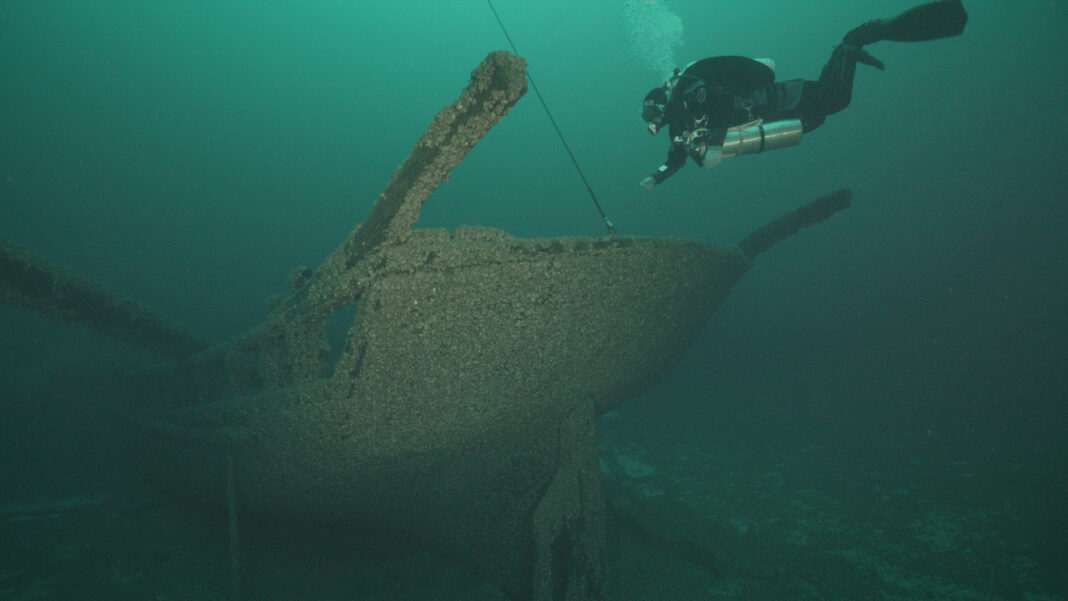Last week, Epix released the first episode of Enslaved, a six-part unscripted docuseries that brings to light some of the untold stories of the Transatlantic slave trade. Part of the narrative follows legendary screen actor – and series co-producer – Samuel L. Jackson as DNA analysis helps him trace his heritage to the country of Gabon on the west coast of Central Africa. A second aspect of the story is presented through the lens of maritime archaeology and takes viewers along for dives on the wrecks of sunken slave ships in England, Suriname, Costa Rica, and Biscayne Bay in Florida, as well as the first-ever positively identified “freedom boat”, a part of the last leg of the Underground Railroad whose final resting place is in the chilly depths of Lake Michigan.
In anticipation of the series debut, DeeperBlue.com had the opportunity to sit down with three members of the dive team to hear all about their experience making the series, and what it was like to dive these ships that are so laden with history and tragedy. Most of the divers we spoke with are members Diving With a Purpose (DWP), a non-profit conservation organization that grew out of the National Association of Black Scuba Divers (NABS). A large part of their mission is the conservation and documentation of African slave trade shipwrecks through education, training, and field experience for interested divers. For nearly the last fifteen years, they’ve been working to find and identify the wreckage site of the Spanish slave ship Guerrero, a quest that uniquely qualified them to partner with director Simcha Jacobovici on Enslaved.
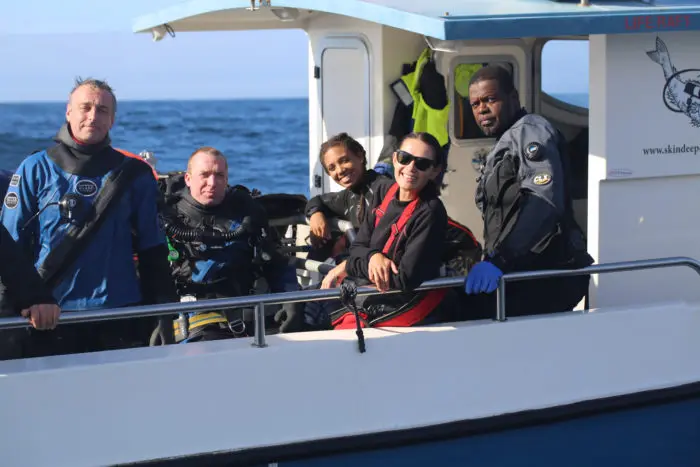
The first member of the crew to be drafted was Kinga Philipps, a writer, journalist, and esteemed member of the Explorer’s Club. In a most modern tale of social networking, Kinga became involved with the Enslaved project through her Instagram friendship with EPIX’s Senior Vice President and Head of Unscripted Programming, Rachel Brill. After learning about the project she knew it was destined to be more than just a job – it had all the makings of a passion project. But as excited as she was, Kinga did have one reservation.
“With any project,” she told us, “I’m aware of what I bring, and what I don’t.” Kinga felt that this particular story was one that needed the voices of divers of color, something that director Simcha Jacobovici had already been thinking. He tasked her with finding divers with skills that would fit the bill, so she reached out to her contacts in the dive community.
Associated Producers (AP), the originators of the series, had already found Kramer Wimberley, through his work with DWP. He had been assisting in a National Parks project to locate the wreck of the Guerrero in Biscayne Bay and wasn’t even aware he’d made it into the film. When AP contacted him to see if he would like to be involved in Enslaved, he thought it was a scam and hung up on them – twice! Fortunately, they were finally able to convince him of their sincere interest, and he was joined by Bahamian marine ecologist Alannah Vellacott and Los Angeles-based freediver, photographer, and member of the LA County Fire Department’s Search and Rescue Dive Team, Joshua Williams.
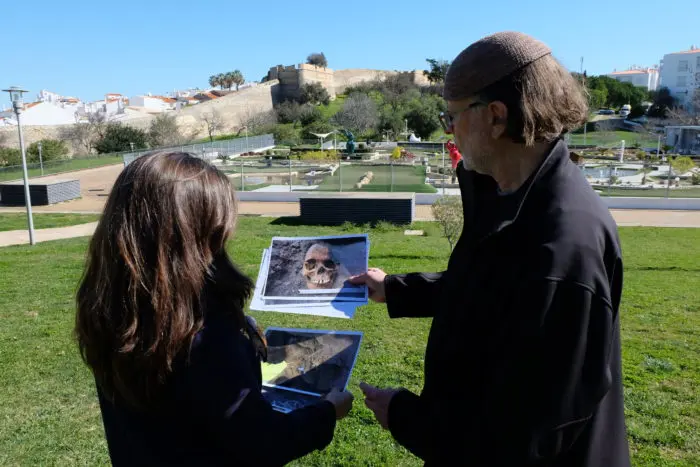
The team assembled, they set off to dive sites on three continents, braving the toughest of conditions to document the wrecks and artifacts that would help piece together parts of the story that hadn’t made it into school history books. Rough seas and crashing waves in the English Channel caused stomachs to quease, hotels to tremble, and even two dive-day cancellations as the swells swept across the deck of their research vessel. It took highly-trained tech divers breathing mixed gas to visit a wreck at the bottom of the English Channel that sat at about 330 feet (100 meters). Unencumbered by anything but his freediving suit and his camera, Joshua marveled at their three-hour ascent and dropped down amid jellyfish and dolphins to hang out and get footage of them killing time at their safety stop.
Half a world away, the team had to chainsaw their way through the jungles of Suriname to reach the mouth of the Maroni River. After braving tree cats, snakes, howler monkeys, spiders, and scads of aggressive mosquitos, they arrived at to find a blackwater dive with zero visibility and a strong current. For the sake of posterity, Kramer descended armed with a big stick to gently announce his presence to the stingrays that were rumored to cover the ocean floor there. The data he brought back to the boat was enough to convince the team that the site wasn’t likely to yield any stunning discoveries.
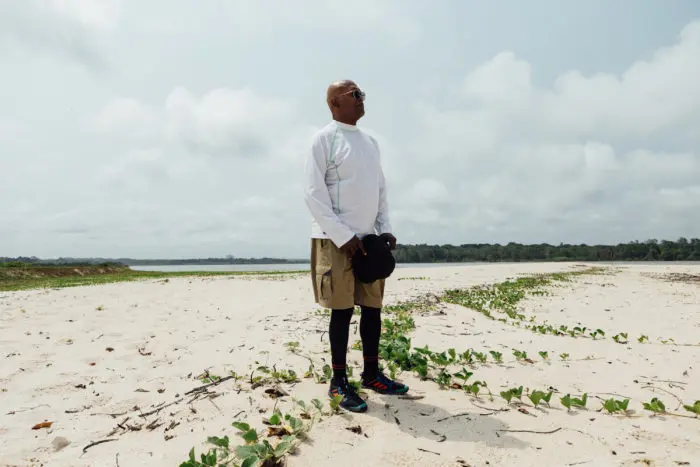
Searching for the remains of the Guerrero in Florida presented its own problems. A veteran of maritime surveying of the wrecks in Biscayne Bay, Kramer explained to us the difficulties of finding and documenting slave shipwrecks.
“In warm, salty waters, the ships are more just debris fields and you have to train your eye to identify things that now look like the ocean bottom but aren’t because they’re now grown over by coral.” He went on to explain, “We as divers know that nature doesn’t build things in perfect spheres, in straight lines with corners. Luckily, copper just turns green, it doesn’t encrust. And glassware, jars, plates, they don’t encrust and are easily date-able.”
When we asked him about the methodology of surveying the wrecks, Kramer stressed that as conservationists, they don’t touch, they just document – look, measure, and document in place. Where the items lie in situ can tell the story of the wrecking event. DWP-trained divers hover over each artifact, sketching it from a planimetric view, and compile all the sketches of a particular wreck into a comprehensive site map. This resource is a valuable tool for researchers hoping to identify a shipwreck. According to Kramer, advancements in underwater photography are a big help, “but most of our work is still done old-school.”
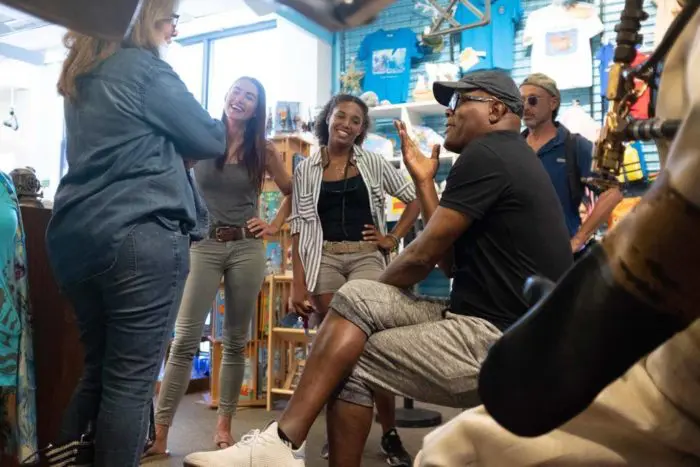
More important than the challenges, the technical gear or the documentation of artifacts was the story they were all there to tell. Throughout our interviews, that was the main theme that kept coming up – that this was a story that needed to be told. It was an emotional experience for everyone involved.
For Kramer, diving the site believed to be the wreck of the Guerrero was painful, solemn.
“It’s a crime scene,” he said, “a place where people lost their lives. The book hasn’t been closed yet, but knowing the story of the ship, the battle that ensued, the Africans that lost their lives that night. The survivors taken and sold into slavery in Cuba – it was frustrating because they were so close to freedom.” Around a hundred of the survivors ended up in the United States and it took three to four years to go through the records to find them. In the end, “they were ex-patriated to Liberia, but not home.”
Kinga recalls an artifact from a museum they visited on the Isle of Scilly in the UK. “It was a rosary, recovered from one of the wrecks. And I couldn’t stop thinking about this captain – piously praying for good weather up on deck with a hold full of slaves below. Compare that to the captains of the freedom boats, risking their lives to help slaves escape to Canada.”
In total, over 12 million Africans were enslaved as part of the Transatlantic slave trade – thousands of ships made the voyages along the Middle Passage. Hundreds of those ships were lost, and 2 million Africans died at sea.

“It’s hard for the human mind to process the tragedy, the genocide of an entire race of people,” Kramer told us. “The slave trade was probably the most genocidal violent act in history. And we still haven’t come to terms with it.” His hope is that by beginning to tell these stories, by finally addressing our history, we can move on to other parts. He quotes a former professor of his, Lenworth Gunther.
“African American history didn’t start with the slave trade – it was interrupted by it.”
Kinga, too, is hopeful about the power of telling these stories. Enslaved, she says, focuses on what African culture has brought into the modern space. With so much stripped away from them, for many their culture was all they had left.
“All the episodes are about the people that were on the ships,” Kramer says finally. “That should be the takeaway.”
New episodes of Enslaved will premier every Monday on the Epix channel (or the app) at 10/9c. You can watch the preview below or on YouTube.
Featured Image: Wreck of The Home freedom boat of abolitionist captain James Nugent, Lake Michigan, USA. ©2020 AP Slave Ships Productions Ltd./Cornelia Street’s Ships Ltd.

